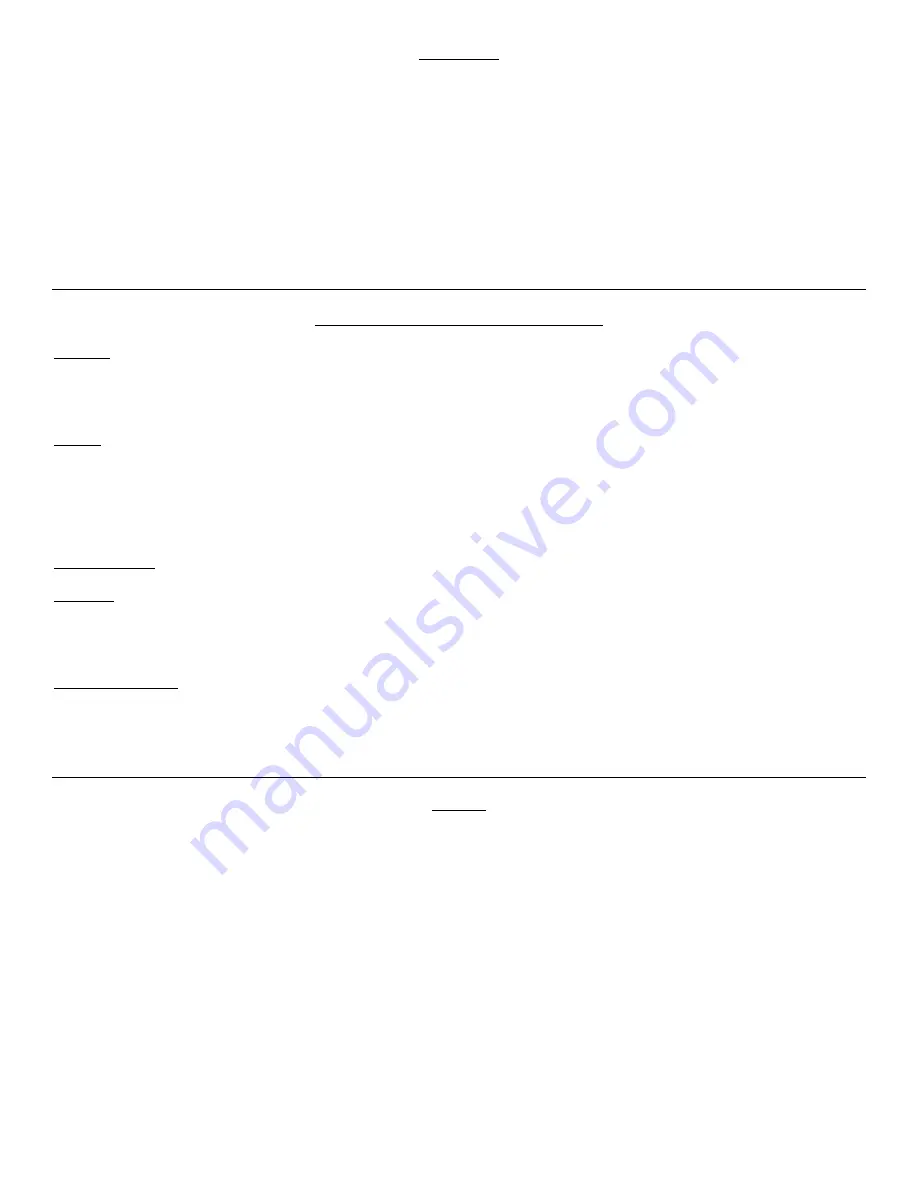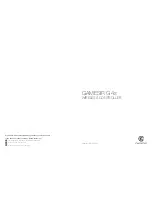
Programming
The control operation and indicator behavior, as described below, is typical. However, controls will not become operational, until they have first been
configured into a system, using the corresponding drag-and-drop icons within the design software (see Audia/Nexia software Help). Controls which
are properly connected to an Audia/Nexia device, but are not yet properly associated with control blocks within the design layout, will produce only a
single flashing LED, and will not be operational. These LEDs will quit flashing (remain green) once the controls are properly associated within the
Audia/Nexia device. As part of the association process, a currently selected control will cycle LEDs to facilitate physical identification.
The control operation and indicator behavior, as described below, can be altered in significant ways, by means of the system design process.
Examples: volume controls can be any individual or grouped levels (including inputs, outputs, matrix cross-points, etc.); actions can be any
individual or grouped functions (including presets, mutes, ducking, combining, etc.); control functions can change along with presets (providing
multiple modes/pages of control operation); certain volumes can have a specified range of control; certain actions can utilize momentary, latching,
or two-position switch selection. Control behavior is completely dependent upon programming within the Audia/Nexia system design.
Typical Control Operation and Indicator Behavior
Volume 8
-
First, select the volume to be adjusted by pushing the control repeatedly, until the corresponding indicator on the vertical column of
LEDs is lit (green). Then, rotate the control to adjust the selected volume. The horizontal row of LEDs will light (amber & red) from left to right, to
indicate the relative volume setting. While stepping through the available selections (pushing the control), the horizontal row of LEDs will update to
reflect the current volume setting for each selection.
Select 8
-
First, select the action to be performed by rotating the control, until the corresponding indicator on the vertical column of LEDs is flashing
(red). Then, push the control to initiate the selected action. Once initiation is complete, the corresponding LED will light (green) to indicate the
selected action has been performed. Making a new selection (rotating the control), will then cause the newly selected action LED to flash (red) for
approximately 15 seconds. Newly selected actions can only be initiated while the LED is flashing. Once the LED quits flashing, selection reverts to
the last initiated action. If actions are mutually exclusive (such as presets), then initiating a new action (pushing the control) will cause the previously
initiated action LED will go off. Otherwise, previously initiated action LEDs may remain lit (green), and if selected, will flash (amber).
Volume / Select 8
-
This control provides the combined operation and behavior of both the
Volume 8
and
Select 8
controls, as described above.
Logic Box
-
The Logic Box provides 20 logic connections, programmable in any combination as logic inputs and logic outputs. Logic inputs provide
control of system actions (such as presets, mutes, ducking, combining, etc.) by means of external contact-closures or 5V TTL circuits. This allows
the creation of customized external remote controls. Logic outputs provide control of external circuitry (such as indicator panels, speaker relays,
camera presets, etc.) by means of open-collector transistors (DC path to ground). This allows system control of external support equipment.
Voltage Control Box
-
The Voltage Control Box provides 4 analog potentiometer inputs, plus 4 logic connections. Potentiometers can be
programmed to control various system levels. Logic connections can be programmed in any combination as logic inputs and logic outputs. Logic
inputs provide control of system actions (such as presets, mutes, ducking, combining, etc.) by means of external contact-closures or 5V TTL circuits.
This allows the creation of customized external remote controls. Logic outputs provide control of external circuitry (such as indicator panels, speaker
relays, camera presets, etc.) by means of open-collector transistors (DC path to ground). This allows system control of external support equipment.
Labelling
The Volume 8, Select 8, and Volume/Select 8 controls all come with a sheet of clear, adhesive-backed labels, for custom printing on a laser
printer. A Word document is available on the Audia software CD and on the Biamp web site (www.biamp.com), as a label printing template. These
labels are meant to be printed using desk-top laser printers only. It is recommended that the printer be set for 'label' printing, and the label sheet
should be 'short-edge' feed from the 'bypass' tray. A test printing of a single label should be done, to assure proper alignment of text. To
compensate for any mis-alignment of text, margins within the Word document may be adjusted. Care should be taken in placement of the labels
onto the controls. To avoid finger-prints, the use of a knife-blade or tweezers is recommended for handling. Severe bending or curling of the label
may cause loss of some toner (text). When placing the label on the control panel, use the vertical column of LED indicators as a visual reference of
alignment. Once the label is in place, a second (un-printed) label may be placed over the first label, to provide protection against wear. Each sheet
contains 25 labels, so in case of errors, additional labels may be printed.
NOTE:
Originally, labels were 1.35" wide and used the Word document
(V8S8 Labels.doc). However, newer control panels require labels which are only 1.25" wide and use Word document (V8S8 B Labels.doc). Check
label width and use the appropriate file for printing.
In the Word document, select Show Gridlines from the Table menu. Each large cell represents a label. The first four columns are 'left-justified' to
create labels for Volume 8 and Select 8 panels, as well as for the 'Volume' (left) section of Volume/Select 8 panels. The last column is 'right-justified'
to create labels for the 'Select' (right) section of Volume/Select 8 panels. Left-click inside any large cell, and begin typing. Use 'Enter' to begin a new
line, and again to leave a blank line. To avoid printing errors, do not change line-spacing or other formatting parameters. However, if you do not
have the default font (Helvetica), or if you wish to change label appearance, you may select a different font before typing.
585.9164.90A






















